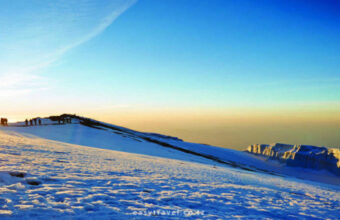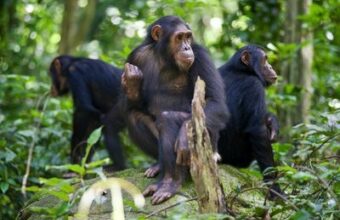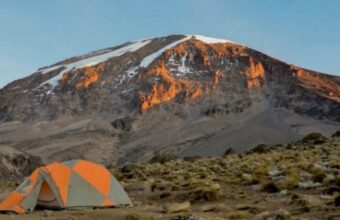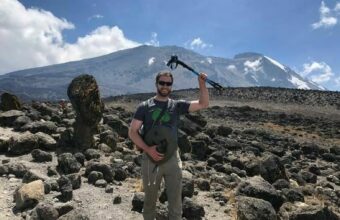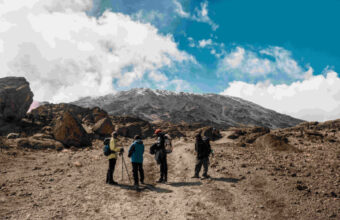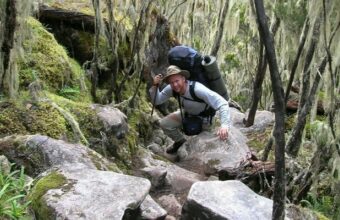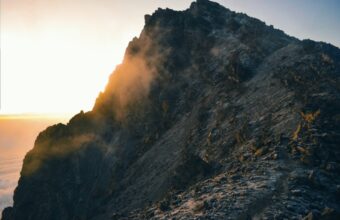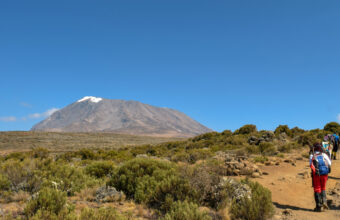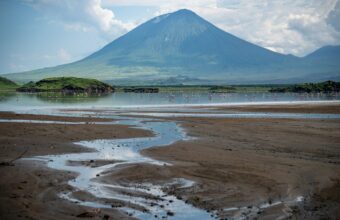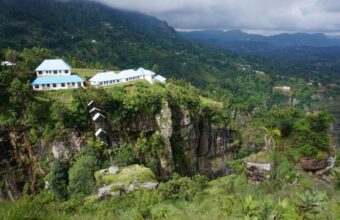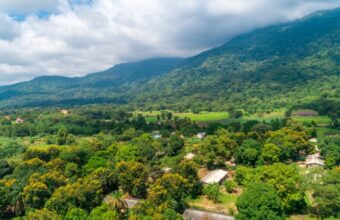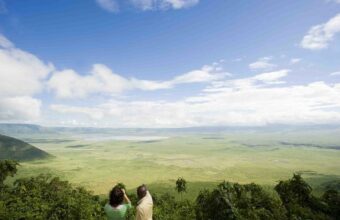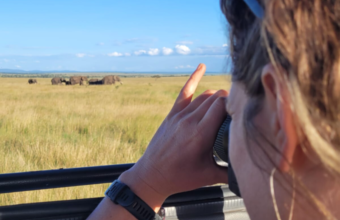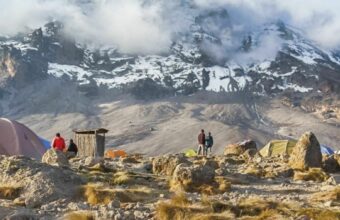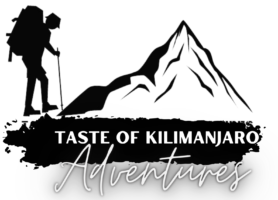Trekking in Tanzania
An expert guide to the best treks in Tanzania
I’ve spent my career trekking and hiking in some pretty far-flung places, from Nepal to Norway. But there’s something different to trekking in Tanzania.
It’s got the mountains and (rapidly shrinking) glaciers that you’ll find in all the world’s trekking hotspots. But where else do you have to keep an eye peeled for elephants, lions and chimpanzees while you hike?! Scenery, wildlife, fascinating cultural immersion: Tanzania is truly a superb – if expensive – place to trek.
Soaring into the clouds, towering above all else on the entire continent, 5,895m Kilimanjaro is the best known trekking prize, not just in Tanzania but all of Africa.
But beyond the highs of Kili, Tanzania boasts many lesser-known treks and hiking trails. Although the personal achievement of standing on the highest summit in Africa is one that will stay with you forever, personally speaking, I think there are more rewards to be found on Tanzania’s lesser-hiked paths.
I first visited Tanzania in 1994 and have returned multiple times since as a travel journalist and guidebook author. I’ve hiked in all the country’s top trekking regions, and even took a guide training course in Tarangire National Park. From the four decades that I’ve been visiting and trekking in Tanzania, my standout piece of advice is this: don’t be dazzled by the allure of Kilimanjaro! Do it for sure, but save time for some of the following treks and hikes as well.
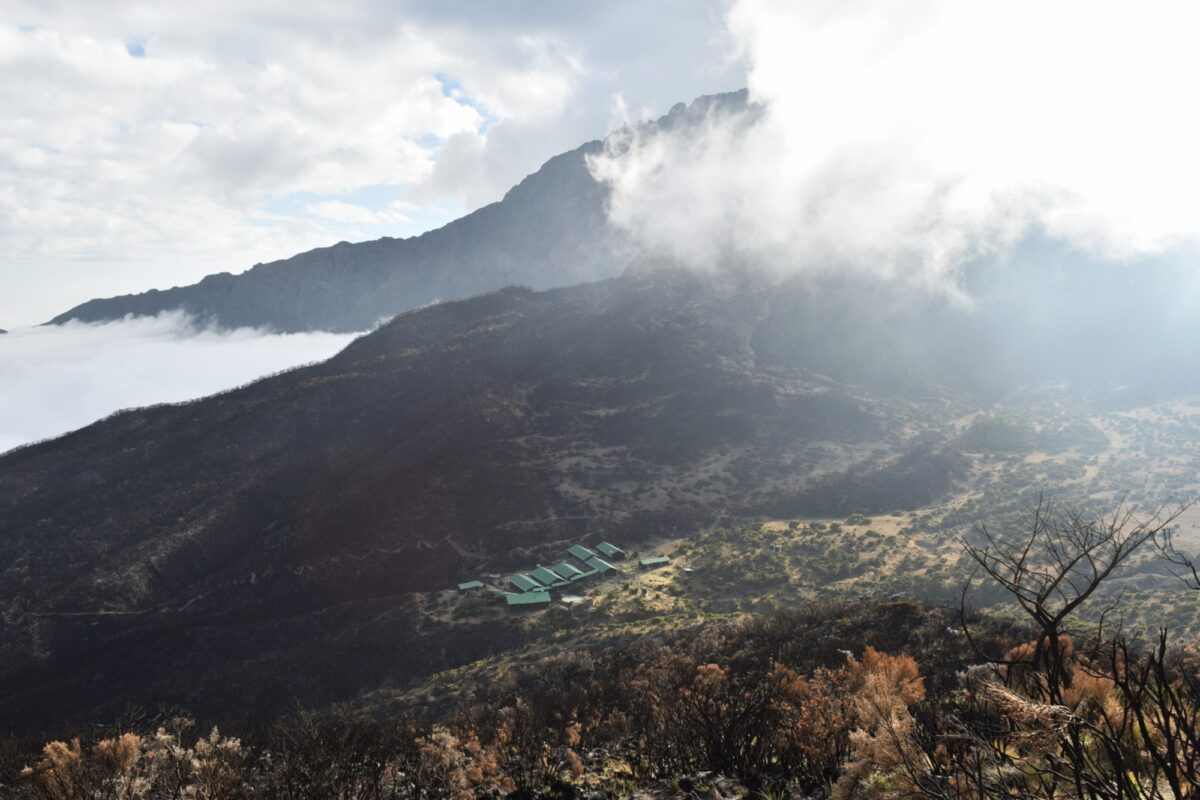
Mt Meru, alternative to Kilimanjaro for those in the know
The best treks in Tanzania
Some popular, and lesser-known, trekking routes
Kili deserves its fame but its popularity brings busy trails and corner-cutting operators. If I had to choose a single favourite trek in Tanzania it would be the Mt. Meru trek.
-
Mt. Meru
-
Mt. Kilimanjaro
-
Ol Doinyo Lengai
-
Usambara Mountains
-
Udzungwa Mountains National Park
-
Ngorongoro Conservation Area
Where to go trekking in Tanzania
Our author's favourite trekking locations
If you're going trekking in Tanzania, you're almost certainly heading to Kilimanjaro. There's nothing wrong with that (just choose your route carefully – see below) but if at all possible, try to save time for Mt Meru which is, in my opinion, by far the better trek in Tanzania.

Mt. Meru
Mt Meru
While the crowds flock to Kilimanjaro, those in the know head to Mt. Meru. At 4,562m it’s Tanzania’s second highest peak and attracts a mere fraction of the numbers of Kilimanjaro. Set in a wonderfully varied national park with diverse scenery and wildlife makes this, I’d argue, the most interesting mountain climb in Tanzania.

Mt. Kilimanjaro
Mt Kilimanjaro
At 5,895m Mt. Kilimanjaro is Africa’s highest peak, and the world's highest freestanding mountain. It’s by far the most popular trekking route in Africa with up to a hundred people a day setting out to reach the summit. There are multiple routes which keep the crowds down, but it’s undoubtedly busy. If solitude is your thing, look elsewhere.

Ol Doinyo Lengai
Ol Doinyo Lengai
Making up the northern tip of a mountain triangle that includes Kilimanjaro and Meru, Ol Doinyo Lengai (2,962m) is a live volcanic cone whose distinctive shape and billowing volcanic smoke have made it a holy mountain for the Maasai people. Remote and quiet, this is a superb place to come hiking.

Usambara Mountains
Usambara Mountains
The Usambara Mountains are a great buckle of steep sided ridges and intensely farmed or forested hills that rise up behind Tanzania’s northeastern coastal zone. The attraction of hiking here isn’t big summits, but cultural interaction and village life. It’s a delightful area that rewards the inquisitive and those prepared to rough it a bit. For me, it’s one of East Africa’s most rewarding hiking areas.

East Africa
Udzungwa Mountain National Park
In the central part of the country, Udzungwa Mountain National Park is said to be the second most biodiverse national park in Africa. The only real way to experience the park is on foot with trails ranging from half-day walks to very challenging multi-day expeditions through thick tangled forest and dreamy waterfalls. I love hiking in this park thanks to its sense of seclusion.

Mahale Mountains National Park
Mahale Mountains
In the very far west of Tanzania the densely forested Mahale Mountains cascade down to the soft sand beaches and turquoise waters (incredible snorkelling) of divine Lake Tanganyika. This is one of the best places to meet our closest cousins; chimpanzees. The chimps here are habituated to people and seeing them up close in the wild is, in my opinion, the single best wildlife experience on this planet. Yep, it’s even better than seeing mountain gorillas. The chimps cover big distances so keeping up with them means a hefty hike is likely in order.
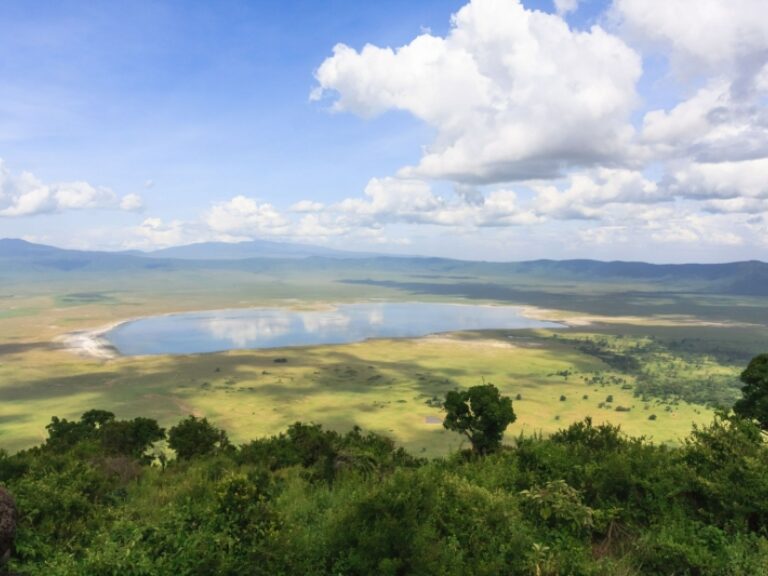
Ngorongoro Conservation Area
Ngorongoro Conservation Area
The centrepiece of the Ngorongoro Conservation Area is the giant, wildlife stuffed Ngorongoro Crater. Hiking is not permitted within the crater itself, due to the risk of becoming lunch for a hungry lion. But the surrounding Ngorongoro Conservation Area of rolling grasslands, dotted with Maasai homesteads and lumbering volcanic peaks, makes fabulous walking country.
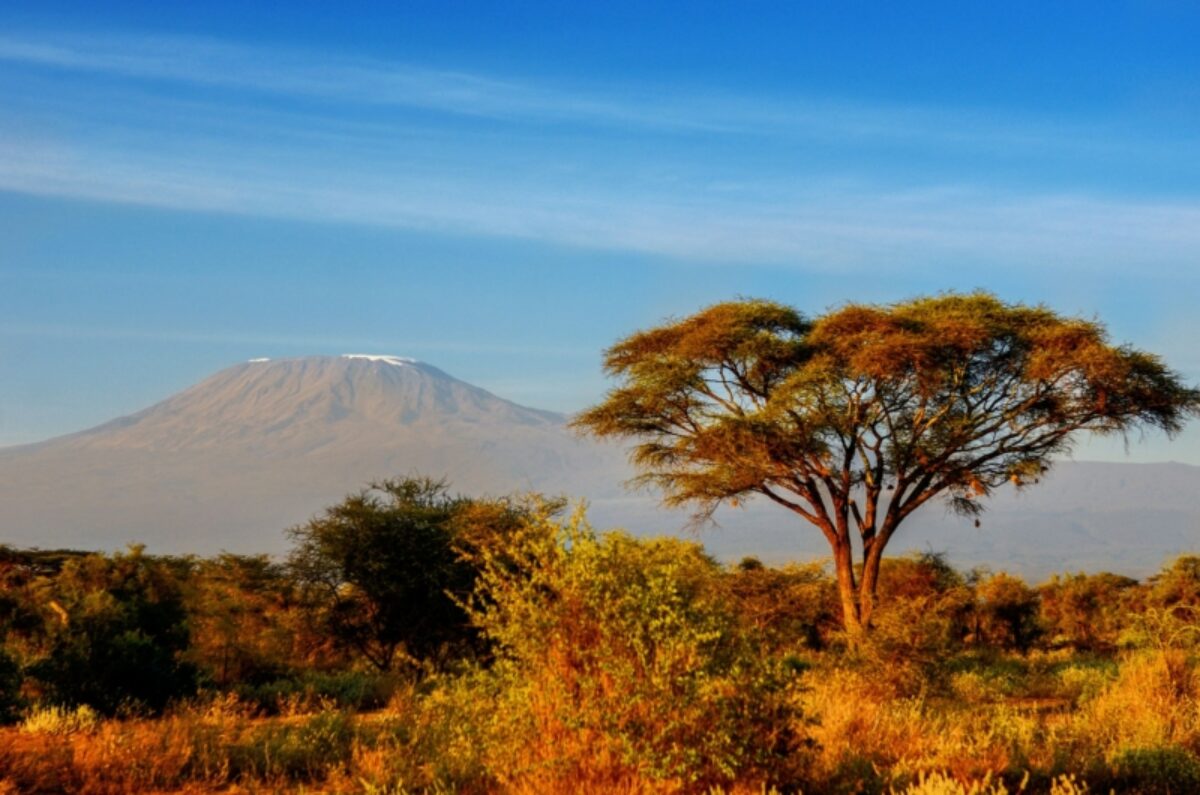
The Kilimanjaro trek might be popular and sometimes unbearably busy... but you can see why.
Planning a Tanzania trek
Everything you wish you'd known before you booked
Choose your Kilimanjaro route carefully!
Kilimanjaro is a vast mountain and there are seven established routes to the top. The Marangu route is the least interesting but, at six days, is the fastest route which makes it the cheapest, and therefore the most popular. This is a problem for two reasons: firstly it gets very crowded, and secondly six days don’t allow enough time to acclimatise; many people rush up the mountain, succumb to altitude sickness, and turn back before reaching the top.
My biggest piece of advice is to avoid the Marangu route if at all possible! My favourites are the longer, more challenging, more scenically varied and much quieter Lemosho and Northern routes.
Whichever route you take, I strongly advise you don’t just go for the shortest and cheapest itinerary you can find. Rushed itineraries and insufficient acclimatisation are the most common cause of failure to reach the summit. Look for operators who are mindful of this fact and factor at least one acclimatisation day into the itinerary. The cost of an extra day is far less than the cost of wasting your entire trek!
Or look further afield!
In my opinion, an even better solution is to steer clear of Kilimanjaro entirely and head to Meru instead. It’s Tanzania’s second-highest peak but receives a tiny fraction of the numbers flocking to Kilimanjaro. It’s set in a beautiful and varied Meru National Park with incredible scenery and wildlife and is, in my view, a much more rewarding climb. Other personal favourites of mine are the Usambara Mountains and Ngorongoro Conservation Area, with their incredible mix of ever fluctuating scenery and the chance to meet local people.
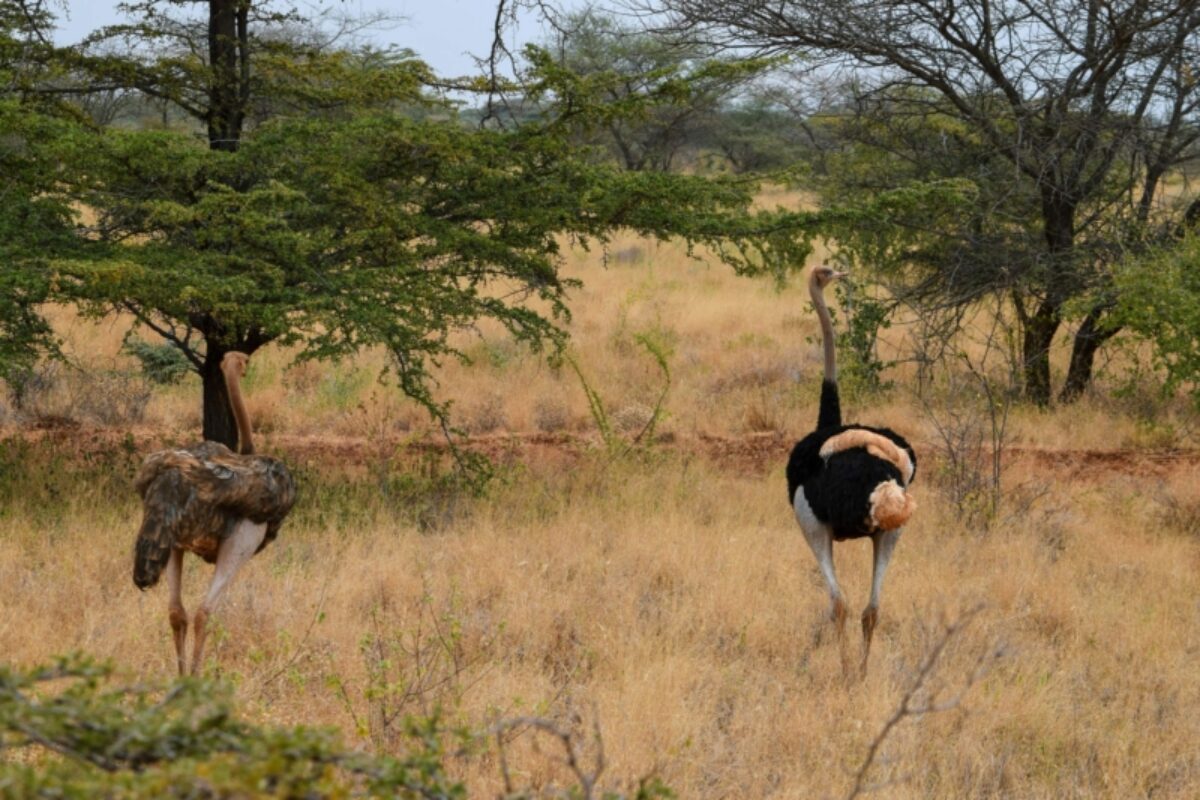
Dodging ostriches in Meru National Park
Tanzania trekking FAQs
Your questions, our expert answers
Question
When is the best time to go trekking and hiking in Tanzania?
Answer
You can hike in Tanzania year round, but the dry season months are generally considered the best times, especially for the big peaks such as Kilimanjaro and Meru. The dry season for these northern mountains is late December through to late March and late June to the end of October.
Question
Is Kilimanjaro realistic for someone in their 60s who is pretty fit and active?
Answer
The main routes up Kilimanjaro involve no technical climbing and really involve nothing more than a long slog. There’s no reason why an older person (or young though, 10 is the legal minimum) of decent fitness cannot climb Kilimanjaro. The big thing to remember is that because of cost most trips are shorter than they really should be and many people get altitude sickness. It’s worth factoring in an extra day or so to allow for proper acclimatisation.
Question
Is Kilimanjaro too touristy these days, are there any suitable alternatives?
Answer
As Africa’s biggest mountain and a very achievable “big” summit, Kilimanjaro has always been a popular trek. Is it too touristy? Well, that depends on perspectives and route taken. There are several different trails to the top and some are very quiet indeed. But, if you really want some peace and quiet, then nearby Mt Meru might be the one for you.
Question
What are the accommodations on a Kilimanjaro trek?
Answer
The Marangu route is the only route that offers accommodation in very basic mountain huts. On all other routes only camping is allowed and then only in designated camping areas. Trek organisers will supply all camping equipment (the quality of which varies depending on how much your trip costs). On the Marangu route everyone must stay in the mountain huts and the beds are laid out dormitory style.
Question
How serious is altitude sickness on Kilimanjaro?
Answer
Altitude related health problems – which can be potentially lethal – are a real risk on Kilimanjaro. This is due as much to the great height of the mountain and because too many people ascend too quickly. This is why it’s very important to allow more days than the quickest tour itineraries suggest. Yes, it costs more but by taking things slower you have a far greater chance of success.
Question
Can you trek Kilimanjaro solo or without a guide?
Answer
No. All trips up Kilimanjaro are as part of an organised trek. You don’t necessarily have to be a part of a trekking group but you are obliged to take a guide and porters and the more people you can share these costs with then the cheaper it becomes. In fact, guides are either compulsory or near enough compulsory on all Tanzanian trekking routes.
Question
Are there any easier treks or hikes around Mt Kilimanjaro?
Answer
It's perfectly possible to hike around Kilimanjaro but not go for the summit.
My favourite is a two-day Kili hike, where you do the first part of the Marangu route, sleep at the Mandara Huts, hike as high as the Horombo escarpment on day two, and then go back down.
Along the way, you encounter narrow trails through the rainforest, amazing views of for example Mawenzi Peak and open moorlands with giant lobelias and groundsels. The ridged trail is narrow as you wander through the rainforest. It’s lush and misty, with the trees adorned with moss. The canopy overhead is alive with birdsongs and a colobus monkey or two.
The hike to the Mandara Hut takes four to six hours at a good walking pace, and it's possible to add a one-hour walk to the Maundi Crater to that. If you are lucky, you see tree hyraxes on the way and on a clear day, the views to the east over Taveta and to the northwest of Mawenzi Peak are stunning.
On day two you will see the glades of the rainforest and follow an ascending path on the open moorlands towards the Horombo escarpment. Views of Mawenzi and the summit of Kibo are amazing. Look for giant lobelias and groundsels. This hike up takes you three to four hours, then you go five to six hours back down again. You stop at the Mandara Huts for lunch, then hike back to the Marangu Gate where the walk ends and you drive back to the hotel.
Question
We are looking for a multi-day trek in Tanzania: we are less interested in scaling peaks but very interested in being part of nature and seeing villages. What would you recommend?
Answer
I think you'll find the Usambara Mountains in northern Tanzania pretty much perfect for the type of hiking you're after (another possibility, all be it one just over the border in Kenya, is the Loita Hills).
There are all kinds of hiking possibilities in the Usambara Mountains from half a day to a week or more. There's nothing technical or difficult about the walking (though make sure you have plenty of wet weather gear!)
The main launch point for treks is the small town of Lushoto. If you're not booking an organised trek and don't mind doing things DIY you should be able to find a guide here, although there's no official registered guiding agency. A good bet can be to ask at guesthouses for help finding a good guide. You wouldn't likely be a part of a set group as the guide would walk with just your party.
You won't need tents as its more village to village trekking with simple guesthouse/homestay style accommodation in each village. You also won't need to carry anything more than snacks as food is always available in guesthouses. It's all quite organised considering the small number of people who hike here.
As for routes your guide will likely have suggestions, but Wikiloc also has a few user recorded routes which could serve as a good starting point. It's a very beautiful area. With big escarpments, drop-offs and varied countryside and people will try hard to help.

